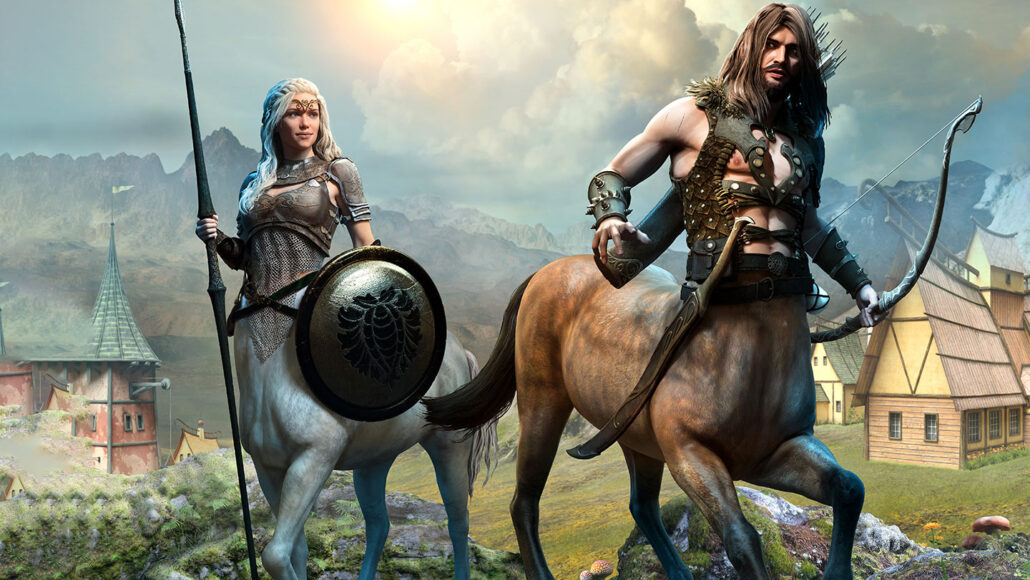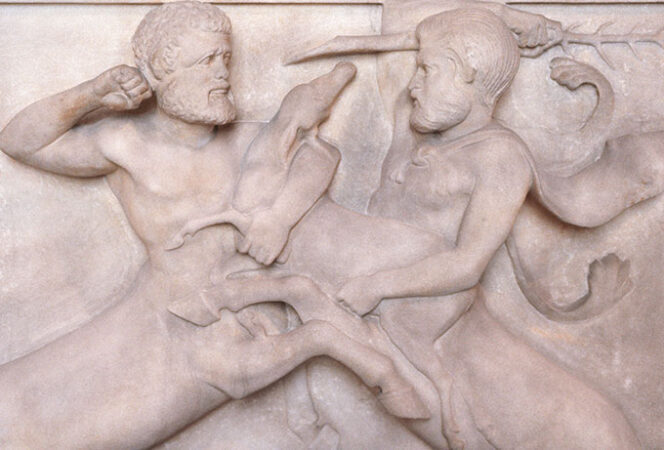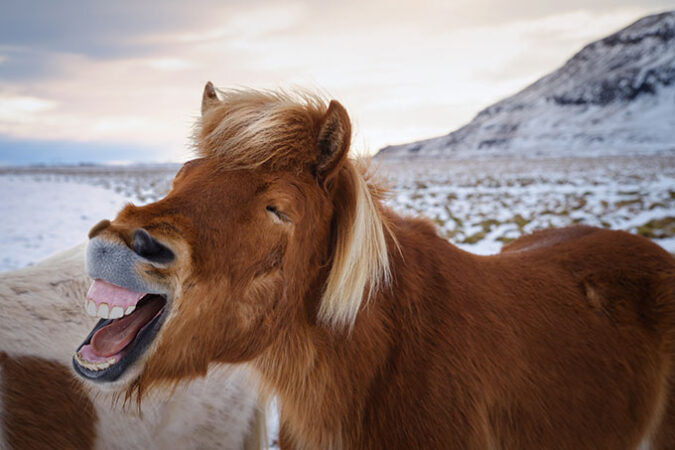How do you build a centaur?
A human-horse mashup might seem simple — until you look inside

Centaurs are creatures of mythology with a human torso and the body of a horse.
Warpaintcobra/iStock/Getty Images Plus
The centaur — a mythical creature that is half human and half horse — might seem like a relatively easy mashup. But once you get past the myth, the centaur’s anatomy and evolution raise a lot of questions.
“The thing that jumps out to me about mythical anatomy is how idealized their anatomies are,” says Lali DeRosier. She is a graduate student at the University of Central Florida in Orlando. There, she studies educational psychology, which is how people learn. She also is a teacher and has taught anatomy.
Centaurs are an example of a chimera (Ky-MEER-uh). In Greek mythology, the original chimera was an animal with a lion’s head, a goat’s body and a snake’s tail. It also breathed fire. It did not exist. Scientists now apply the term chimera to any single organism made of parts from two or more organisms with different genes. One common example is a person who receives an organ transplant. The recipient is still one person, but their new organ has different genes. Together, they become a chimera.
A human with a new liver is one thing. But a human with the body of a horse? That’s a chimera of a different color.

From horse to human
In myth, ancient gods could sew parts of different animals together to get a magical creature. They could have created mermaids — half man, half fish — or fauns — half man, half goat — or any other combination. But what if such combos evolved over time? “I think the centaur is probably the most problematic” of the mythical creatures, DeRosier says. “It really has the most divergent body plan.”
Both humans and horses are tetrapods — animals with four limbs. “Every mammal is from the tetrapod configuration, two forelimbs and two hindlimbs,” explains Nolan Bunting. He studies veterinary medicine at Colorado State University in Fort Collins. For fun, he also runs the “marvelous critters veterinary medicine club,” where students who are studying to be veterinarians get together to talk about magical creatures.
“When you think of a mermaid … the body plan is still basically the same,” DeRosier notes. There are still two forelimbs and two hindlimbs, even if the hindlimbs are fins. But while evolution can take existing forelimbs and hindlimbs and change them, centaurs present another challenge. They’ve got an extra set of limbs — two human arms plus four horse legs. That makes them six-legged hexapods and more like insects than other mammals, Bunting explains.
How would evolution make a six-legged creature from a four-legged creature? A horse could either evolve a human-like torso, or a human could evolve a horse’s body.
Bunting prefers the idea of a human torso evolving out of a horse body because of the way that horses eat. Horses are hindgut fermenters. This is a way for animals to break down tough plant material like grass. Bacteria in the horse’s intestines break down the hard parts of the plants. Because of this, horses need a very large intestine. Much larger than a human’s.
Horses are also hunted by large carnivores. So their bodies have evolved to run away fast, Bunting notes. The speed and the large guts mean that horses — and centaurs — could get very big. “The larger the size, the safer you are,” he says. “In general, if you’re a larger creature, larger predators don’t want to harm you.”
As a mythical horse got bigger, he reasons, it might have developed a flexible human-like torso, arms and hands. “With hands you can actually manipulate your food a little bit better,” he says. Think about how much easier it is to pull an apple from a tree using hands rather than with your teeth.

From human to horse
DeRosier favors the idea of a human form that evolves a horse body. “It would make much more sense to me if a centaur had four femurs,” she says. Femurs are the large, sturdy bones in our thighs and in a horse’s hind legs. That would give a centaur two sets of back legs and two pelvises. This would help the human torso stay upright.
Mutation to hox genes could result in an extra set of hind limbs, DeRosier says. These genes provide the instructions for an organism’s body plan. If such a mutation gave a person extra hips and an extra pair of legs, over time their spine might lengthen to separate the legs. But the legs wouldn’t look like elegant horse legs. “I would think that it would be like four sets of feet,” DeRosier says. “I do like the notion of them with little Adidas on their feet.”
In order for a mutation to stick around, generation after generation, it has to provide some sort of advantage. “What is going on in these animals lives to make this adaptation worthwhile?” DeRosier asks. She and Bunting both agree that running would be the main advantage. “They’d be running immensely long distances or having to evade predators,” she says.
All that running could affect where internal organs end up. “It’d be more beneficial to have the lungs in the actual chest of the horse,” Bunting says. “Horses are built to run,” and that means they need much more oxygen than the smaller human lungs could provide. And if they’re still eating grass, their huge intestines will need to be in the horse part, too.
The human part could keep its heart, DeRosier says. But the horse part would have a heart, too. “It would make sense to have two hearts … to have an additional pump to circulate blood to the [head].” Unless, like a giraffe, the centaur just had a really large heart — in the horse portion.
What does that leave for the human portion? The stomach, maybe. The ribs might also be there, not to protect the lungs, but to protect the stomach and help keep the torso up. “I would say the ribs continue to spread down to the horse section,” Bunting says. So the human section might look more like a big, round barrel than a human torso.
The dietary needs of this creature would probably affect what it’s face looks like. Don’t expect that it would be a beauty. Horses have snipping incisors at the front to tear up grass, and huge grinding molars at the back. Somehow, the centaur would have to fit those big teeth into a human-sized face. “The teeth would be terrifying,” DeRosier says. “The head would have to be huge, just to hold their teeth correctly.”
With extra legs, giant teeth and huge barrel chests, it’s a good thing that centaurs are only the stuff of story.







